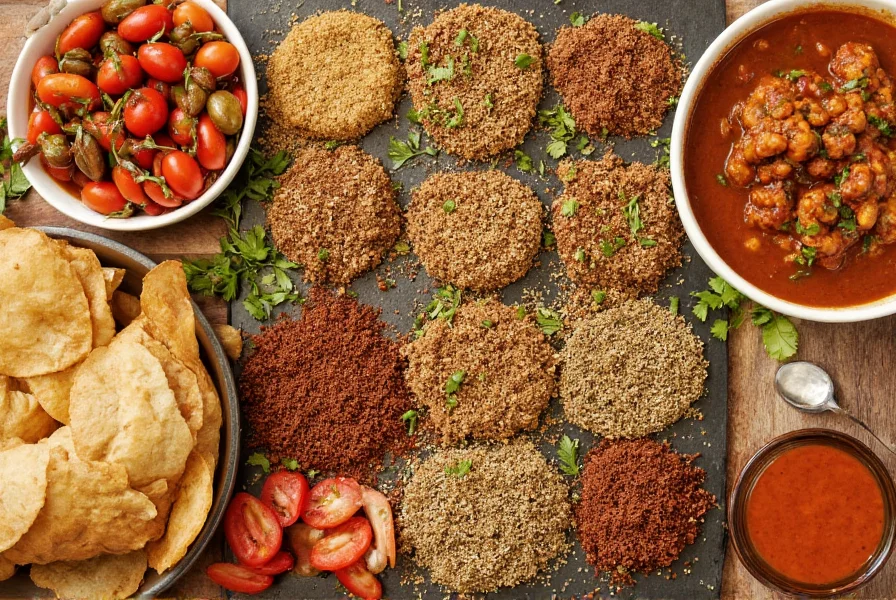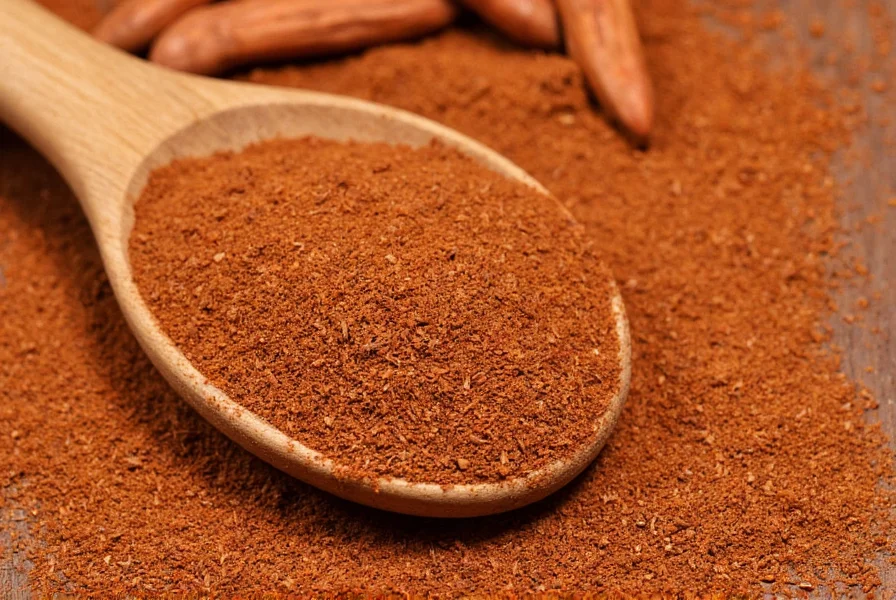Cumin stands as one of the world's most widely used spices, with a distinctive earthy, warm, and slightly citrusy flavor profile that enhances countless dishes across various cuisines. This ancient seasoning has journeyed from its origins in the Eastern Mediterranean to become a staple in kitchens from Mexico to India, proving its versatility and enduring appeal.
What Exactly Is Cumin?
Cumin (Cuminum cyminum) is a flowering plant in the Apiaceae family, which also includes parsley, coriander, and caraway. The spice itself comes from the dried seeds of this plant. These small, oblong seeds range in color from yellowish-brown to dark brown and feature longitudinal ridges along their surface.
When discussing is cumin a spice, it's important to understand the botanical distinction between spices and herbs. Herbs typically come from the leafy, green parts of plants, while spices originate from other plant parts like seeds (cumin, mustard), roots (ginger, turmeric), bark (cinnamon), or fruits (peppercorns). By this definition, cumin unequivocally qualifies as a spice since it's derived from the plant's seeds.

The Historical Journey of Cumin
Archaeological evidence shows cumin has been used for over 5,000 years, with seeds discovered in ancient Syrian and Egyptian sites. It was so valued in ancient times that it appeared in Egyptian mummification rituals and was used as currency. The Romans considered cumin a symbol of thrift, while during the Middle Ages, European brides carried cumin seeds as a token of fidelity.
Today, India remains the largest producer and consumer of cumin, followed by Iran, Turkey, and China. This global journey explains why cumin features prominently in such diverse cuisines as Indian curries, Mexican chili, Middle Eastern falafel, and North African tagines.
Cumin Seed vs. Ground Cumin: Understanding the Difference
When exploring what type of spice is cumin, it's essential to recognize its two primary forms:
| Form | Characteristics | Best Uses |
|---|---|---|
| Whole Cumin Seeds | Longer shelf life, more complex flavor when toasted | Tempering in Indian cooking, pickling, slow-cooked dishes |
| Ground Cumin | Immediate flavor release, more convenient | Dry rubs, spice blends, quick-cooking recipes |
Professional chefs often recommend toasting whole cumin seeds before grinding them, as this process dramatically enhances their aromatic compounds. The volatile oils responsible for cumin's distinctive flavor begin to evaporate immediately after grinding, which is why freshly ground cumin offers superior taste compared to pre-ground versions.
Decoding Cumin's Flavor Profile
Understanding cumin flavor profile helps explain its culinary versatility. Cumin delivers:
- An earthy, warm base note
- Subtle citrus undertones
- Mildly peppery finish
- Complex nuttiness when toasted
This distinctive combination makes cumin an essential component in spice blends worldwide. In Indian cuisine, it's fundamental to garam masala; in Mexican cooking, it's indispensable in chili powder; and in North Africa, it features prominently in ras el hanout.
Practical Culinary Applications
When considering how to use cumin in cooking, several techniques maximize its potential:
- Dry toasting: Heat seeds in a dry skillet over medium heat for 1-2 minutes until fragrant
- Bloom in oil: Add to hot oil at the beginning of cooking to distribute flavor evenly
- Combine with acid: Pair with lemon juice or vinegar to balance its earthiness
- Use in moderation: Its strong flavor can dominate if overused
For those wondering is cumin a spice that works in sweet dishes, the answer is generally no—its savory profile makes it uncommon in desserts, though some chocolate mole recipes incorporate it for complexity.

Nutritional Aspects of Cumin
While primarily valued for flavor rather than nutrition, cumin does contain several beneficial compounds. A single teaspoon (2.1g) of ground cumin provides:
- Iron: 1.4mg (8% of daily value)
- Manganese: 0.2mg (9% of daily value)
- Calcium: 23mg (2% of daily value)
- Antioxidants: Including terpenes, phenols, and flavonoids
Research suggests cumin may support digestion and have anti-inflammatory properties, though these potential cumin spice benefits should not be overstated as medical claims. As with all spices, cumin's primary value remains its ability to enhance flavor while potentially reducing the need for excess salt or fat in cooking.
Common Substitutions and Pairings
When you're out of cumin or exploring alternatives, understanding cumin spice substitutes becomes valuable. While no substitute perfectly replicates cumin's unique profile, these options work in a pinch:
- Coriander: Shares some citrus notes but milder
- Fennel seeds: Similar shape but sweeter, anise-like flavor
- Caraway: Closest relative with comparable earthiness
- Chili powder: For recipes where cumin is part of a blend
Cumin pairs exceptionally well with complementary spices like coriander, turmeric, garlic, and chili powder. In dishes where cumin plays a starring role, such as chili or curry, these pairings create the complex flavor layers that define these beloved cuisines.
Proper Storage for Maximum Freshness
To maintain cumin's potency, proper storage is essential. Whole seeds retain their flavor for 3-4 years when stored in an airtight container away from light and heat, while ground cumin typically remains fresh for 6-12 months. For extended freshness, store cumin in the refrigerator or freezer—this slows the oxidation process that degrades flavor compounds.
Always check your cumin's freshness by rubbing a small amount between your fingers and smelling it. Fresh cumin should release a strong, distinctive aroma. If it smells dull or musty, it's time to replace it.
Frequently Asked Questions
Is cumin considered a spice or an herb?
Cumin is definitively classified as a spice, not an herb. The distinction lies in the plant part used: herbs come from leafy green parts of plants, while spices derive from seeds, roots, bark, or other non-leaf components. Since cumin comes from the dried seeds of the Cuminum cyminum plant, it qualifies as a spice.
What makes cumin different from other spices?
Cumin has a distinctive earthy, warm flavor with subtle citrus notes and a slightly peppery finish. Unlike many spices, cumin's flavor intensifies when toasted, releasing aromatic compounds that create a more complex profile. Its unique chemical composition, particularly cuminaldehyde, gives cumin its characteristic scent and taste that sets it apart from similar spices like caraway or coriander.
Can I substitute ground cumin for cumin seeds in recipes?
Yes, but with adjustments. As a general rule, 1 teaspoon of ground cumin equals 1.5 teaspoons of whole cumin seeds. However, whole seeds provide a more complex flavor when toasted before use, while ground cumin offers immediate flavor release. For best results, toast whole seeds and grind them fresh when possible, as pre-ground cumin loses potency more quickly.
Why does cumin feature prominently in so many global cuisines?
Cumin's widespread use across diverse culinary traditions stems from its remarkable versatility and ability to enhance other flavors without overpowering them. Its earthy warmth complements both meat and vegetable dishes, while its antimicrobial properties historically helped preserve food. Additionally, cumin grows well in arid climates, making it accessible to many ancient civilizations that incorporated it into their culinary traditions.
Does cumin have any health benefits?
Cumin contains antioxidants and provides small amounts of iron, manganese, and calcium. Some studies suggest it may support digestion and have anti-inflammatory properties, but these potential benefits should not be overstated. Like most spices, cumin's primary value is culinary—enhancing flavor while potentially reducing the need for excess salt or fat in cooking. It should be enjoyed as part of a balanced diet rather than relied upon for specific health outcomes.











 浙公网安备
33010002000092号
浙公网安备
33010002000092号 浙B2-20120091-4
浙B2-20120091-4